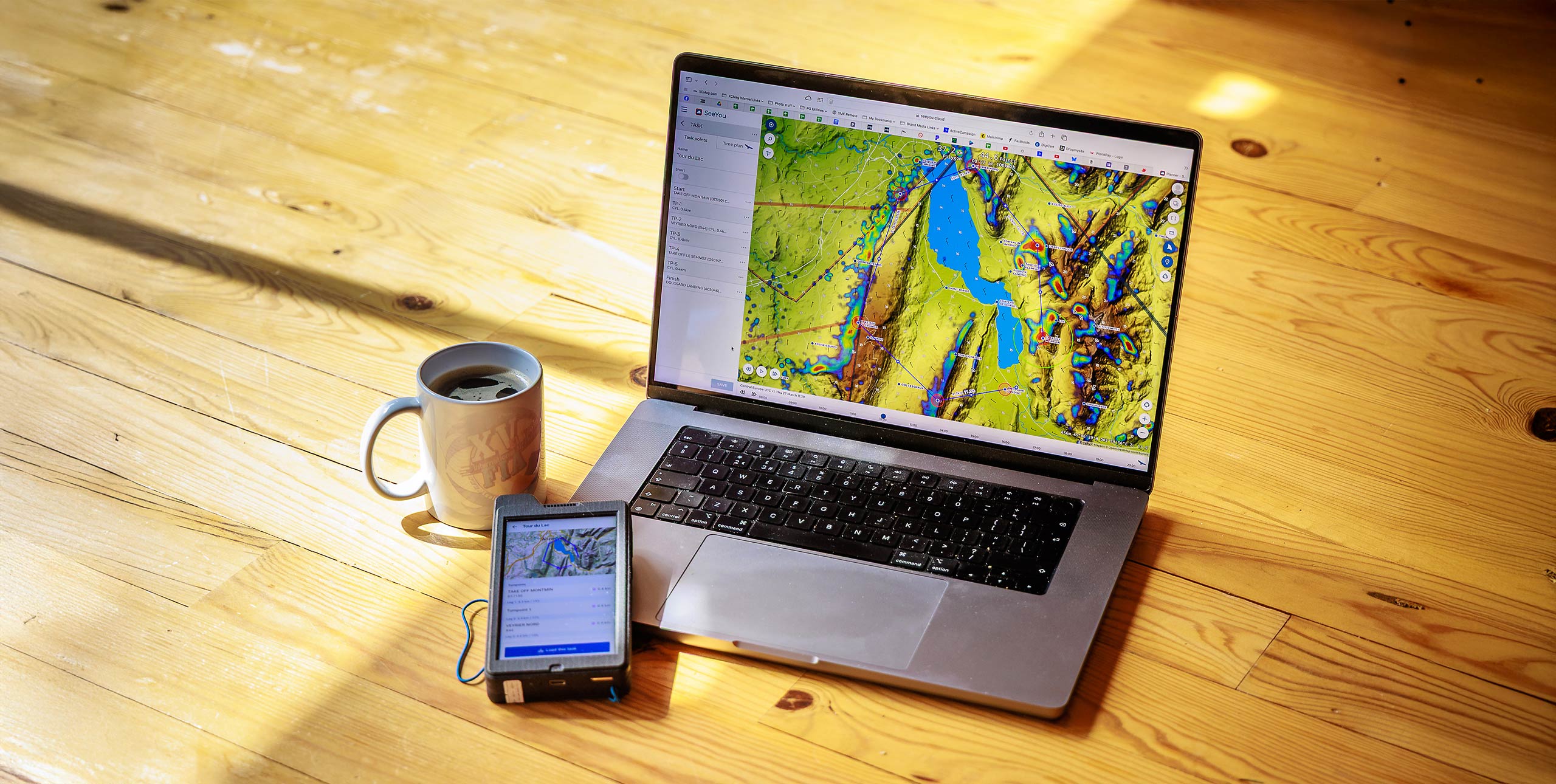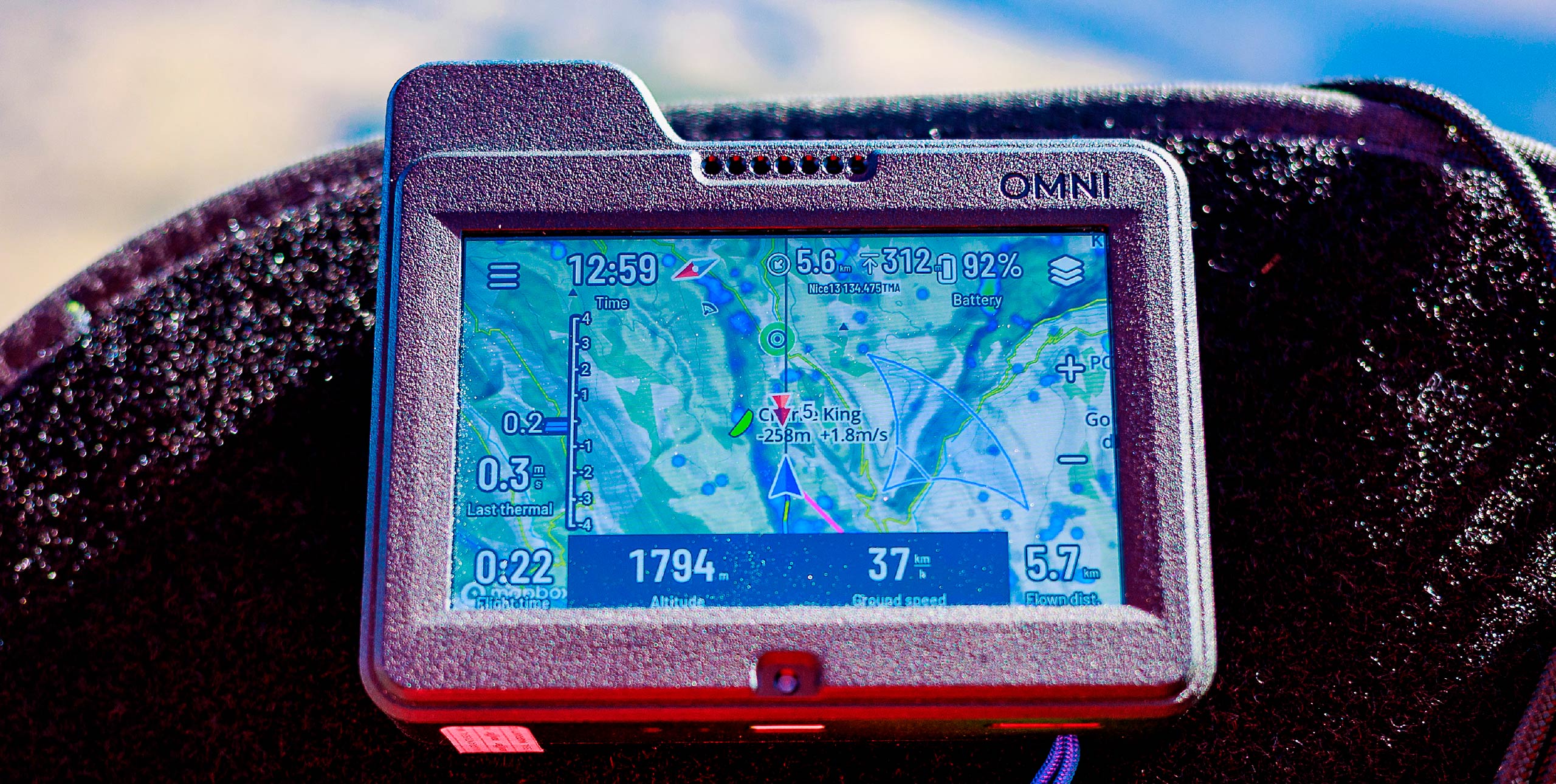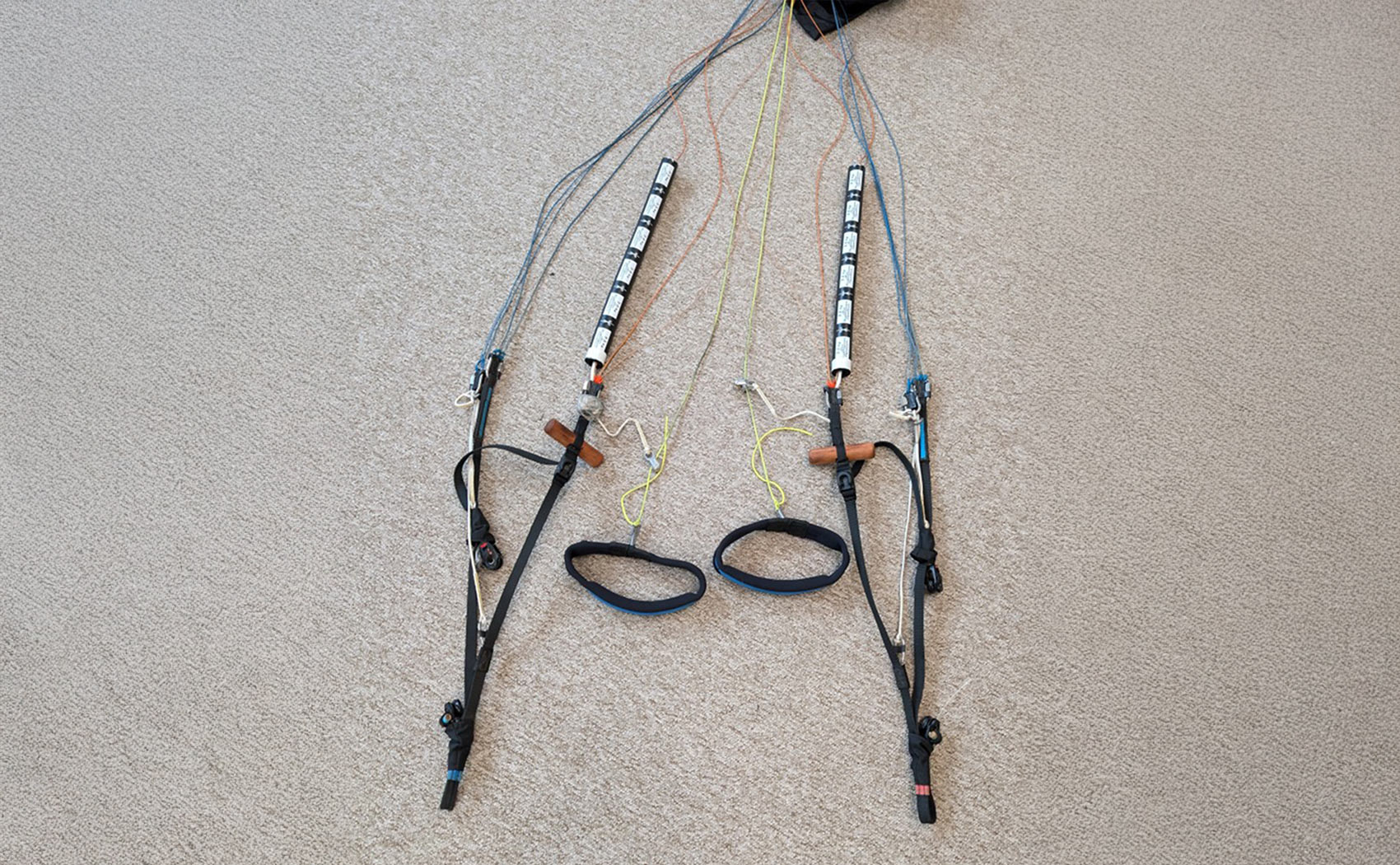
Luke Nicol flies this new high-end hang gliding instrument
Development of flight instruments for hang gliding has slowed in recent years. One of the reasons was the formidable Flytec 6030 (also branded as the Bräuniger IQ Compeo+) – in competitions almost every pilot had one. It was the first instrument with everything you needed for hang gliding comps: good task software; usable airspace; good total energy compensation (a must for most HG pilots); and all the fancy task-related information like glide-to-goal, height above goal, glide ratio over the ground etc. It dominated the scene for over a decade.
In that time however, paragliding instruments have developed at a pace, leaving hang glider pilots feeling a bit left behind. No longer! Enter the new Naviter Blade, a dedicated hang gliding instrument encased in a beautiful aerodynamic pod, with a variety of different mounts to clip straight on to your hang glider and all the functions you could possibly need. Naviter have put a huge amount of time and effort into making sure the Blade is perfect before releasing it to the public. So what does it offer?
Air speed indicator coupled with total energy compensation
As hang glider performance has continued to increase, with some hang gliders now boasting more than 21:1 glide angle, we now treat our glides like sailplane pilots. Dolphining in lift under cloud streets and not stopping for lift unless it makes mathematical sense. Pilots with an accurate Speed indicator and Total Energy Compensation have an advantage here, and the Naviter Blade provides both through a highly accurate pitot tube encased in the nose.
A very loud speaker
You can regularly exceed 100km/h on glide on a hang glider, and the wind noise can be very loud. On many instruments I have flown with you feel the lift before looking across to the vario to see you are climbing; you then slow down and start to hear the instrument. Quite frustrating and I could never work out why they didn’t just make the devices louder. Well with the Blade they did – it is designed for someone who needs hearing aids! I could only go as loud as 80%, and that was already a lot louder than anything else I have used. A simple but big problem finally solved.
Colour screen
This is the first hang gliding instrument I have used with a colour screen. It really helps with maps and airspace, the only problem is that colour displays are usually much harder to see in sunlight than black and white. Naviter have overcome this by using a bigger, powerful battery and made the screen brightness high. It was very easy to see in the bright sunlight of the Swiss Alps where I tested it.
A configurable colour moving map
A super-nice feature and one of the things that really makes the Blade stand out. The moving map is high definition and shows terrain, towns, relief and everything you need to know where you are over the ground. No longer do you have to try and work out where you are with a black and white pixelated map or Velcro your mobile phone to the base bar. The Blade pairs this brilliant colour moving map to an overlaid airspace map, so you can fly closer to the airspace without accidentally crossing into it. The map uses the same software as the Oudie, which is what paraglider pilots have been using in competitions and XC for the last few years. You will love it!
Touchscreen
When using older instruments like the Flytec 6030 you had to navigate the menus with buttons. With the Blade you can quickly swipe between different pages and menus with an easy-to-use touchscreen that they have actually optimised for use with gloves: a great feature. Going back to an older instrument feels like swapping your new smartphone for a pager.
Aerodynamic housing
The whole instrument was built for this teardrop shaped pod, which is also the slimmest on the market. It feels expensive and high quality. It’s well balanced as the battery is one side of the pod and the display the other. It’s really well designed and I feel it’s the most aerodynamic choice on the market.
Integrated Flarm/Fanet+
Thankfully, I didn’t get a chance to test this part of the instrument but a lot of instruments are now including Flarm and anti-collision features. The sky is getting busier, we all leave the hill more and are sharing more airspace with other users, especially sailplanes.
Thermal assistant
Whilst many pilots do not use this feature, it’s very accurate and quite addictive when mapping wide areas of lift. Flying alone I used it regularly. In busy competition gaggles I found I didn’t want to be looking at a screen though. A useful feature when flying XC on your own.
In competition
Many top pilots are now flying with the Blade. Slovenian Team Pilot Matjaz Klemencic was involved with developing the instrument and has flown prototypes since 2013. He rates the maps, the screen and the reliability and says he no longer flies with a backup GPS in comps – he’s that certain of the Blade. He also likes the volume and the sound. “The vario is loud enough to hear at any given speed. It takes a bit of time and general computer logic to trim it up for yourself, but you can always steal your friend’s tuned interface with two clicks!”
In conclusion
The Blade is ideal for the competition or XC pilot. It is probably too much for the weekend pilot, but it is by far the most advanced hang gliding instrument I’ve ever flown. It’s high end, great build and very well thought-out. Everything you could want, finished in one sleek aerodynamic design.
MANUFACTURER’S SPECIFICATIONS
Naviter say: “For pilots who want all of the functionality to win comps and enjoy XC”
Size: 435 x 105 x 20 mm
Weight: 600g
Airspeed: Yes, measured by sensor
Vario: Total Energy compensated vario
Speaker: Loud enough at 100km/h
Battery: 12 hours
Time to charge: 6h
RRP: 1299 € including VAT
Published in Cross Country Issue 206 (Dec 2019 / Jan 2020)











